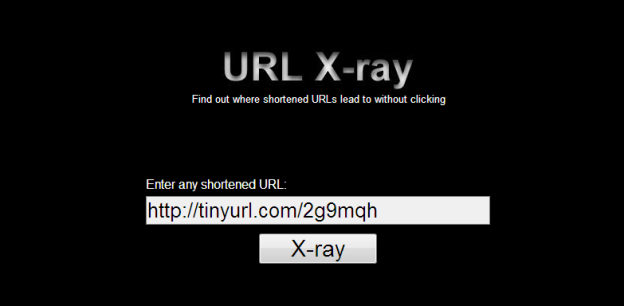You click a shortened link and suddenly wonder: “Where is this actually taking me?”; That split second of uncertainty hits everyone who navigates the modern web. Whether it’s a bit.ly link in a social media post or a tinyurl in an email, shortened URLs have become part of our digital landscape-but they’ve also created a world where we can’t see our destination before we arrive.
This hidden nature of shortened links isn’t just inconvenient; it can be dangerous. Cybercriminals exploit these masked URLs to lead unsuspecting users to malicious websites, phishing pages, or malware downloads. The solution? URL expanders-powerful tools that reveal the true destination of any shortened link before you click.
What Are URL Expanders and Why Do You Need Them?
URL expanders are online tools or software applications that reveal the full, original URL hidden behind shortened links. Think of them as digital translators that convert compressed web addresses back to their complete form, showing you exactly where a link leads before you visit it.
The Growing Need for Link Expansion Tools
The internet sees billions of shortened URLs created daily across platforms like Twitter, Instagram, LinkedIn, and countless marketing campaigns. While services like Bitly, TinyURL, and Ow.ly make sharing easier, they also create security blindspots.
Consider these scenarios where URL expanders become essential:
- Receiving suspicious emails with shortened links
- Encountering unfamiliar bit.ly links on social media
- Checking marketing links before clicking
- Verifying the safety of URLs shared in group chats
- Researching competitors’ link destinations
- Ensuring compliance with company security policies
How URL Shorteners Work (And Why They Can Be Risky)
Understanding URL shorteners helps explain why expansion tools are crucial. When you create a shortened link, the service:
- Takes your original URL (like https://www.example.com/very-long-page-name-with-parameters)
- Creates a short alias (like bit.ly/3x4Y5z)
- Stores the connection in their database
- Redirects visitors from the short link to the original destination
This redirection process creates opportunities for misuse. Malicious actors can:
- Hide phishing websites behind legitimate-looking short URLs
- Mask malware download links
- Redirect users through multiple unsafe sites
- Track user behavior without consent
- Bypass security filters that block known bad domains
Top URL Expander Tools: Comprehensive Comparison
1. CheckShortURL - Best Overall Free Option
Features:
- Supports 300+ URL shortening services
- Shows complete redirect chain
- Displays website safety ratings
- Mobile-friendly interface
- No registration required
Pros:
- Comprehensive service coverage
- Fast expansion results
- Clean, easy-to-use interface
- Completely free
Cons:
- Limited advanced features
- No bulk processing
- Basic security analysis
Best For: Casual users who need quick, reliable URL expansion for daily browsing safety.
2. Unshorten.It - Most Comprehensive Analysis
Features:
- Detailed security scanning
- Screenshot previews of destination pages
- Malware detection
- Redirect chain visualization
- API access available
Pros:
- In-depth security analysis
- Visual preview capability
- Professional-grade scanning
- Excellent for security research
Cons:
- Slower processing times
- Some features require payment
- Interface can be overwhelming for beginners
Best For: Security professionals, researchers, and users who need detailed link analysis.
3. ExpandURL - Simple and Reliable
Features:
- Support for 200+ shortening services
- Clean, minimalist interface
- Fast processing
- Mobile responsive
- Bookmark-friendly
Pros:
- Extremely fast results
- Zero learning curve
- Works on all devices
- Reliable uptime
Cons:
- Limited security features
- No bulk expansion
- Basic reporting
Best For: Users who prioritize speed and simplicity over advanced features.
4. LongURL - Developer-Friendly Platform
Features:
- Comprehensive API
- Bulk URL processing
- Custom integration options
- Detailed documentation
- Enterprise solutions
Pros:
- Excellent API documentation
- Scalable for business use
- Regular updates and maintenance
- Strong developer community
Cons:
- Requires technical knowledge
- Paid plans for advanced features
- Limited free tier
Best For: Developers, businesses, and power users who need API access and bulk processing.
5. URLVoid - Security-Focused Expansion
Features:
- Multiple security engine scanning
- Reputation checking
- Blacklist verification
- Detailed safety reports
- Historical data tracking
Pros:
- Exceptional security analysis
- Multiple verification engines
- Comprehensive safety reports
- Tracks reputation over time
Cons:
- Slower than basic expanders
- Interface complexity
- Limited free scans per day
Best For: Security-conscious users and organizations with strict safety requirements.
6. WhereGoes - Visual Redirect Tracking
Features:
- Visual redirect chain mapping
- Geographic location tracking
- Response time analysis
- Mobile and desktop views
- Social sharing integration
Pros:
- Excellent visualization
- Geographic insights
- Performance metrics
- User-friendly design
Cons:
- Limited security scanning
- Fewer supported services
- Slower processing
Best For: Marketing professionals and analysts who need redirect chain visualization.
Browser Extensions for URL Expansion
1. Link Redirect Trace (Chrome/Firefox)
This browser extension automatically shows redirect chains when you hover over links, providing instant visibility into where shortened URLs lead without visiting separate websites.
Key Features:
- Hover-to-expand functionality
- Visual redirect indicators
- Right-click expansion options
- Customizable security warnings
2. URL Expander Plus (Chrome)
A lightweight extension that adds expand buttons next to shortened links on web pages, making it easy to check destinations without leaving your current page.
Key Features:
- In-page expansion buttons
- Batch link processing
- Security risk indicators
- Whitelist management
3. Redirect Detective (Firefox)
Focuses on security analysis, automatically scanning expanded URLs for potential threats and providing safety ratings before you click.
Key Features:
- Automatic threat detection
- Safety rating system
- Customizable security levels
- Detailed threat reports
Advanced URL Expansion Techniques
Using Command Line Tools
For technical users, command line tools offer powerful URL expansion capabilities:
cURL Method:
curl -I -L -s -o /dev/null -w "%{url_effective}" [shortened-url] wget Method:
wget --spider --max-redirect=5 [shortened-url] 2>&1 | grep Location API Integration for Developers
Most professional URL expanders offer APIs for integration into applications:
import requests def expand_url(short_url): response = requests.head(short_url, allow_redirects=True) return response.url Bulk Processing Solutions
For businesses handling large volumes of shortened URLs:
- CSV Upload Tools: Many services accept spreadsheet uploads for bulk processing
- API Batch Requests: Process hundreds of URLs simultaneously
- Integration Platforms: Connect URL expanders to existing security tools
Security Best Practices for Shortened Links
Before Clicking Any Shortened URL:
- Check the Source: Verify who shared the link and through what channel
- Use URL Expanders: Always expand suspicious or unfamiliar shortened links
- Look for Context Clues: Legitimate links usually include relevant context
- Trust Your Instincts: If something feels off, don’t click
Red Flags to Watch For:
- Links shared by unknown or suspicious accounts
- URLs with random character strings
- Links promising too-good-to-be-true offers
- Shortened URLs in urgent or threatening messages
- Links requiring immediate action
Creating Your Security Workflow:
- Receive shortened link → 2. Check source credibility → 3. Expand URL → 4. Verify destination → 5. Proceed with caution
Business and Enterprise Solutions
Why Organizations Need URL Expansion Tools
Companies face unique challenges with shortened links:
- Employee security training requirements
- Compliance with industry regulations
- Protection of sensitive corporate data
- Monitoring of marketing campaign links
- Verification of partner and vendor communications
Enterprise-Grade Features to Consider:
- Centralized Management: Admin controls and user permissions
- Integration Capabilities: Connect with existing security infrastructure
- Reporting and Analytics: Track expansion activities and threats
- Custom Whitelists: Pre-approved safe domains and services
- Automated Scanning: Real-time threat detection and blocking
Recommended Enterprise Solutions:
- Proofpoint URL Defense: Comprehensive email security with URL analysis
- Symantec Web Security Service: Enterprise-grade web filtering and analysis
- Cisco Umbrella: Cloud-delivered security with URL reputation
- Microsoft Defender: Integrated security for Office 365 environments
Mobile URL Expansion: Staying Safe on the Go
Mobile devices present unique challenges for URL safety:
- Smaller screens make URL inspection difficult
- Touch interfaces can lead to accidental clicks
- Mobile apps often hide full URL information
- Shared links through messaging apps lack context
Mobile-Friendly Expansion Tools:
- CheckShortURL Mobile: Responsive web interface optimized for mobile
- URL Expander Apps: Dedicated mobile applications for iOS and Android
- Browser Integration: Mobile browsers with built-in expansion features
- Messaging App Extensions: Third-party tools that work within popular chat apps
Mobile Safety Tips:
- Bookmark trusted URL expander tools for quick access
- Use mobile browsers that show full URLs in the address bar
- Be extra cautious with links received through text messages
- Consider using mobile security apps that include URL scanning
The Future of URL Security
Emerging Threats and Solutions
As technology evolves, so do the methods used by cybercriminals:
New Threats:
- AI-generated phishing sites that mimic legitimate businesses
- Dynamic URLs that change destinations based on user behavior
- Multi-stage redirects that bypass traditional security tools
- Social engineering attacks using trusted shortening services
Innovative Solutions:
- Machine learning algorithms that predict malicious intent
- Blockchain-based URL verification systems
- Real-time collaboration between security platforms
- Enhanced browser security features and warnings
Industry Standards and Regulations
Organizations worldwide are developing standards for URL safety:
- Enhanced security requirements for financial institutions
- Healthcare industry compliance for link sharing
- Educational sector guidelines for student safety
- Government standards for official communications
Choosing the Right URL Expander for Your Needs
For Individual Users:
Basic Protection: CheckShortURL or ExpandURL for simple, free expansion Enhanced Security: URLVoid or Unshorten.It for detailed safety analysis Convenience: Browser extensions for seamless integration Mobile Users: Mobile-optimized tools or dedicated apps
For Small Businesses:
Cost-Effective: Free tools with occasional paid upgrades Integration: Solutions that work with existing email and security tools Training: Tools with user-friendly interfaces for employee adoption Scalability: Services that can grow with business needs
For Large Enterprises:
Comprehensive Security: Enterprise-grade solutions with advanced threat detection Compliance: Tools that meet industry-specific regulations Integration: Platforms that connect with existing security infrastructure Management: Centralized controls and detailed reporting capabilities
Implementation Guide: Getting Started with URL Expanders
Step 1: Assess Your Needs
Determine your primary use cases:
- Personal browsing safety
- Business email security
- Marketing campaign analysis
- Compliance requirements
- Developer integration needs
Step 2: Select Your Tools
Choose based on your assessment:
- Start with free tools for basic needs
- Upgrade to paid services for advanced features
- Consider multiple tools for different use cases
- Plan for future scalability
Step 3: Establish Workflows
Create standard procedures:
- Define when to use URL expanders
- Train team members on proper usage
- Set up automated scanning where possible
- Establish escalation procedures for threats
Step 4: Monitor and Adjust
Regularly review your approach:
- Track expansion activities and results
- Update tools based on new threats
- Refine workflows based on user feedback
- Stay informed about emerging security trends
Common Mistakes to Avoid
Over-Reliance on Single Solutions
Don’t depend on just one URL expander. Different tools excel in different areas, and having multiple options provides better coverage and redundancy.
Ignoring Source Context
URL expansion is just one part of link security. Always consider the source, timing, and context of shortened links alongside expansion results.
Skipping Updates and Maintenance
Security threats evolve constantly. Ensure your chosen tools receive regular updates and that you stay informed about new features and capabilities.
Neglecting User Training
The best tools are useless if people don’t know how to use them properly. Invest in training and awareness programs for yourself and your team.
Measuring the Effectiveness of URL Expansion Tools
Key Performance Indicators:
- Detection Rate: Percentage of malicious URLs identified
- False Positive Rate: Legitimate URLs incorrectly flagged as suspicious
- Response Time: Speed of expansion and analysis
- Coverage: Number of shortening services supported
- User Adoption: How frequently team members use the tools
Regular Assessment Questions:
- Are we catching more threats than before implementation?
- How much time are we saving compared to manual checking?
- What percentage of our users actively use the tools?
- Are we meeting our security compliance requirements?
- What improvements could enhance our current setup?
Conclusion: Building a Safer Digital Experience
URL expanders represent a crucial line of defense in our increasingly complex digital landscape. As shortened links continue to proliferate across social media, email, and messaging platforms, the ability to see where these links lead before clicking becomes not just convenient, but essential for security.
The tools and strategies outlined in this guide provide multiple layers of protection, from simple free expanders for casual users to enterprise-grade solutions for large organizations. The key is matching the right tool to your specific needs while maintaining awareness that URL expansion is part of a broader security strategy.
Remember that technology alone isn’t enough. Combining reliable URL expansion tools with good security habits, ongoing education, and healthy skepticism creates the most effective defense against malicious shortened links. Whether you’re protecting personal information or safeguarding an entire organization, the investment in proper URL expansion tools and training pays dividends in prevented security incidents and peace of mind.
As threats continue to evolve, so too will the tools designed to counter them. Stay informed about new developments in URL security, regularly reassess your chosen solutions, and maintain the security-first mindset that keeps you and your organization safe in an increasingly connected world.
The next time you encounter a shortened link, you’ll be equipped with the knowledge and tools to investigate safely, verify authenticity, and proceed with confidence. In our age of digital uncertainty, that level of preparedness is not just valuable-it’s essential.








